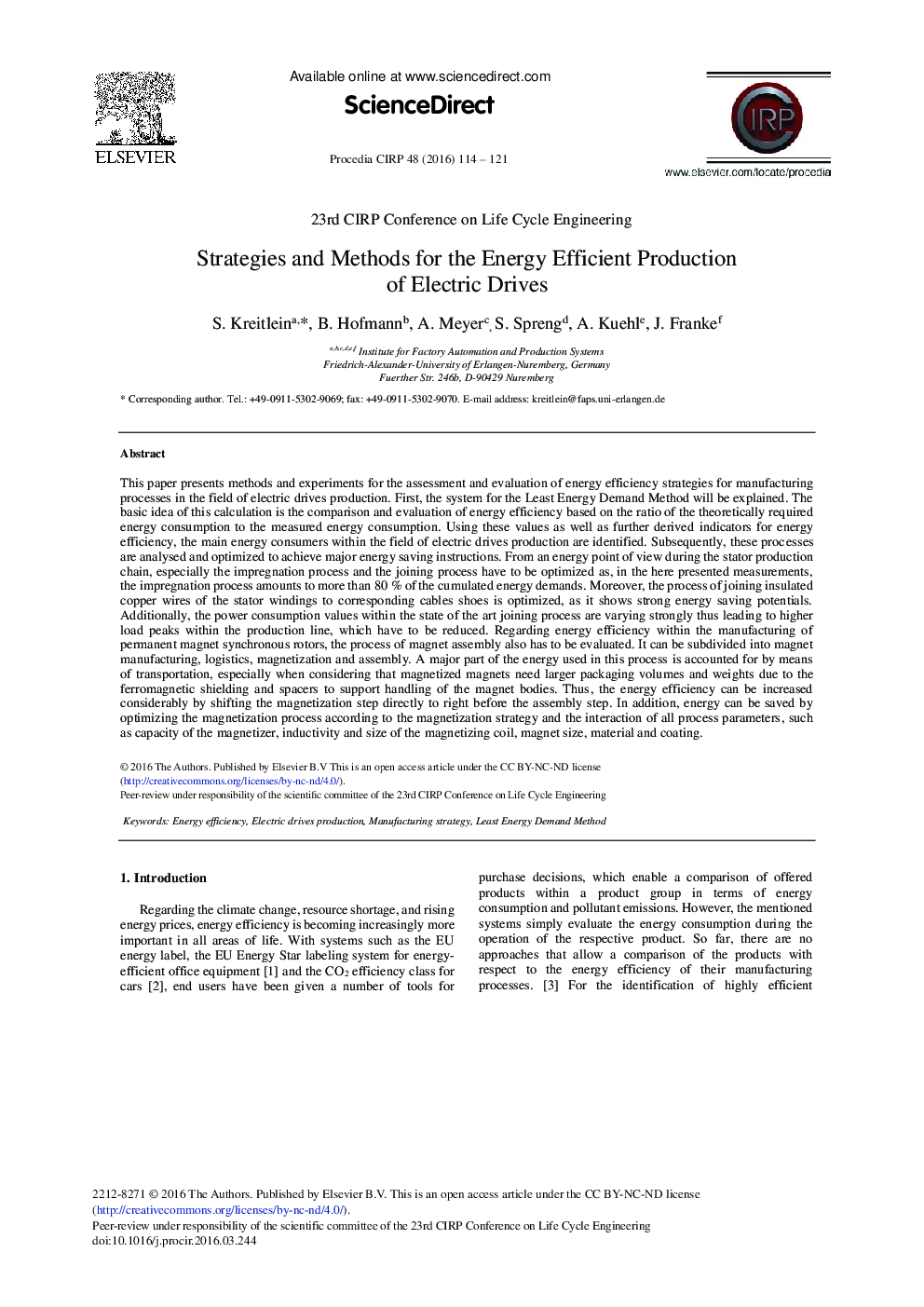| کد مقاله | کد نشریه | سال انتشار | مقاله انگلیسی | نسخه تمام متن |
|---|---|---|---|---|
| 1698656 | 1519304 | 2016 | 8 صفحه PDF | دانلود رایگان |
This paper presents methods and experiments for the assessment and evaluation of energy efficiency strategies for manufacturing processes in the field of electric drives production. First, the system for the Least Energy Demand Method will be explained. The basic idea of this calculation is the comparison and evaluation of energy efficiency based on the ratio of the theoretically required energy consumption to the measured energy consumption. Using these values as well as further derived indicators for energy efficiency, the main energy consumers within the field of electric drives production are identified. Subsequently, these processes are analysed and optimized to achieve major energy saving instructions. From an energy point of view during the stator production chain, especially the impregnation process and the joining process have to be optimized as, in the here presented measurements, the impregnation process amounts to more than 80 % of the cumulated energy demands. Moreover, the process of joining insulated copper wires of the stator windings to corresponding cables shoes is optimized, as it shows strong energy saving potentials. Additionally, the power consumption values within the state of the art joining process are varying strongly thus leading to higher load peaks within the production line, which have to be reduced. Regarding energy efficiency within the manufacturing of permanent magnet synchronous rotors, the process of magnet assembly also has to be evaluated. It can be subdivided into magnet manufacturing, logistics, magnetization and assembly. A major part of the energy used in this process is accounted for by means of transportation, especially when considering that magnetized magnets need larger packaging volumes and weights due to the ferromagnetic shielding and spacers to support handling of the magnet bodies. Thus, the energy efficiency can be increased considerably by shifting the magnetization step directly to right before the assembly step. In addition, energy can be saved by optimizing the magnetization process according to the magnetization strategy and the interaction of all process parameters, such as capacity of the magnetizer, inductivity and size of the magnetizing coil, magnet size, material and coating.
Journal: Procedia CIRP - Volume 48, 2016, Pages 114–121
